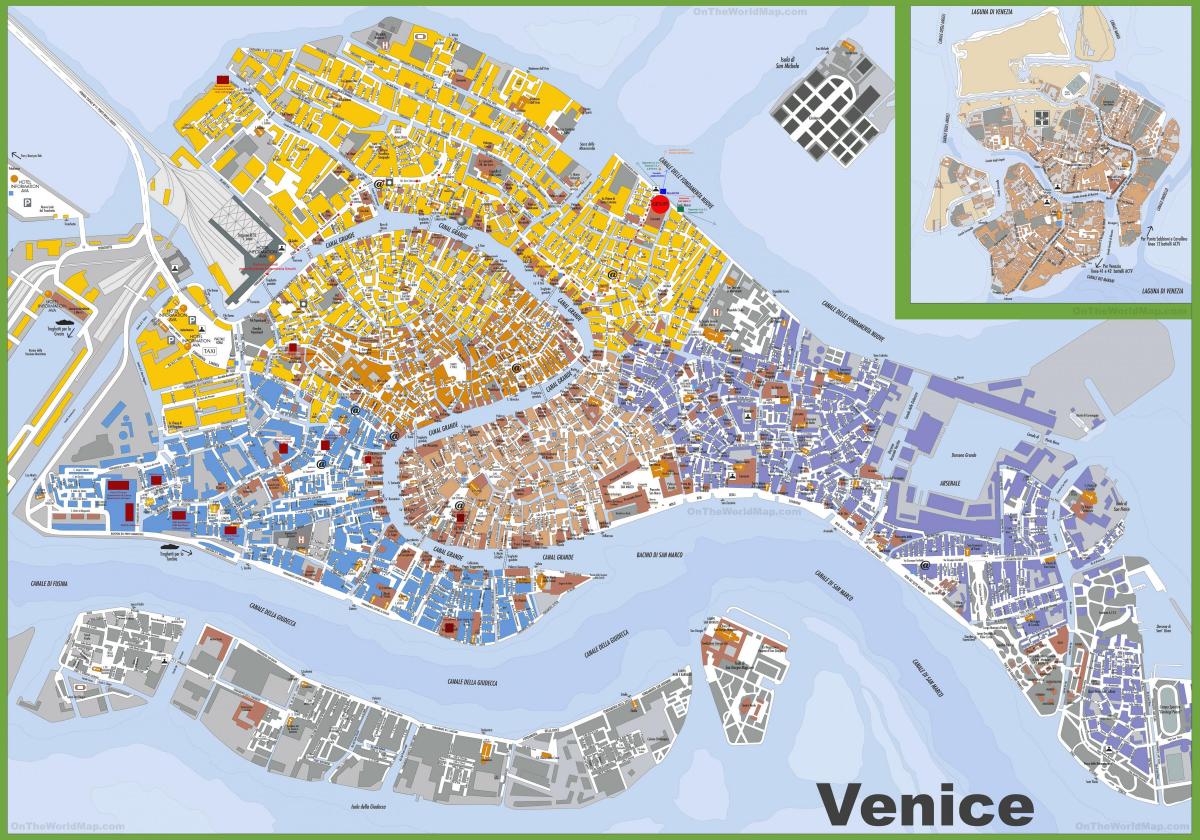search
Venice map
Detailed map of Venice. Venice map (Italy) to print. Venice map (Italy) to download. Venice is the capital of the Veneto region as its shown in Venice map. In 2009, there were 270,098 people residing in Venice comune (the population estimate of 272,000 inhabitants includes the population of the whole Comune of Venezia; around 60,000 in the historic city of Venice (Centro storico); 176,000 in Terraferma (the Mainland), mostly in the large frazioni of Mestre and Marghera; 31,000 live on other islands in the lagoon).
The buildings of Venice are constructed on closely spaced wooden piles as its mentioned in Venice map. Most of these Venice piles are still intact after centuries of submersion. The foundations rest on the piles, and buildings of brick or stone sit above these footings. The Venice piles penetrate a softer layer of sand and mud until they reach a much harder layer of compressed clay.
Venice economy has changed throughout history. In the Middle-Ages and the Renaissance, Venice was a major centre for commerce and trade, as it controlled a vast sea-empire, and became an extremely wealthy European city (see Venice map), a leader in political and economic affairs and a centre for trade and commerce. Since the 11th century until the 15th century pilgrimages to the Holy Land were offered in Venice.
There are numerous attractions in Venice, such as St Mark's Basilica, the Grand Canal, and the Piazza San Marco as you can see in Venice map. The Lido of Venice is also a popular international luxury destination, attracting thousands of actors, critics, celebrities, and mainly people in the cinematic industry. The city of Venice also relies heavily on the cruise business.
There is also a historic Jewish Community in Venice. The Venetian Ghetto was the area in which Jews were compelled to live under the Venetian Republic. It is from its name, in the Venetian language, that the word "ghetto", used in many languages, is derived (see Venice map). William Shakespeare play The Merchant of Venice, probably written in the late 16th century, features Shylock, a Venetian Jew and his family. Venice also has an eruv, built for and still used by the Jewish community.


